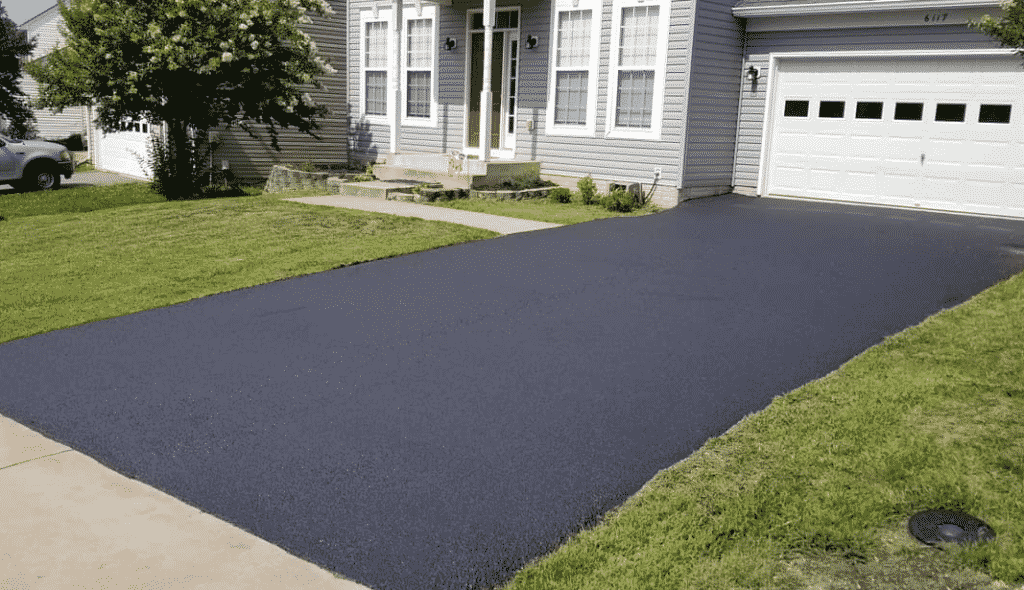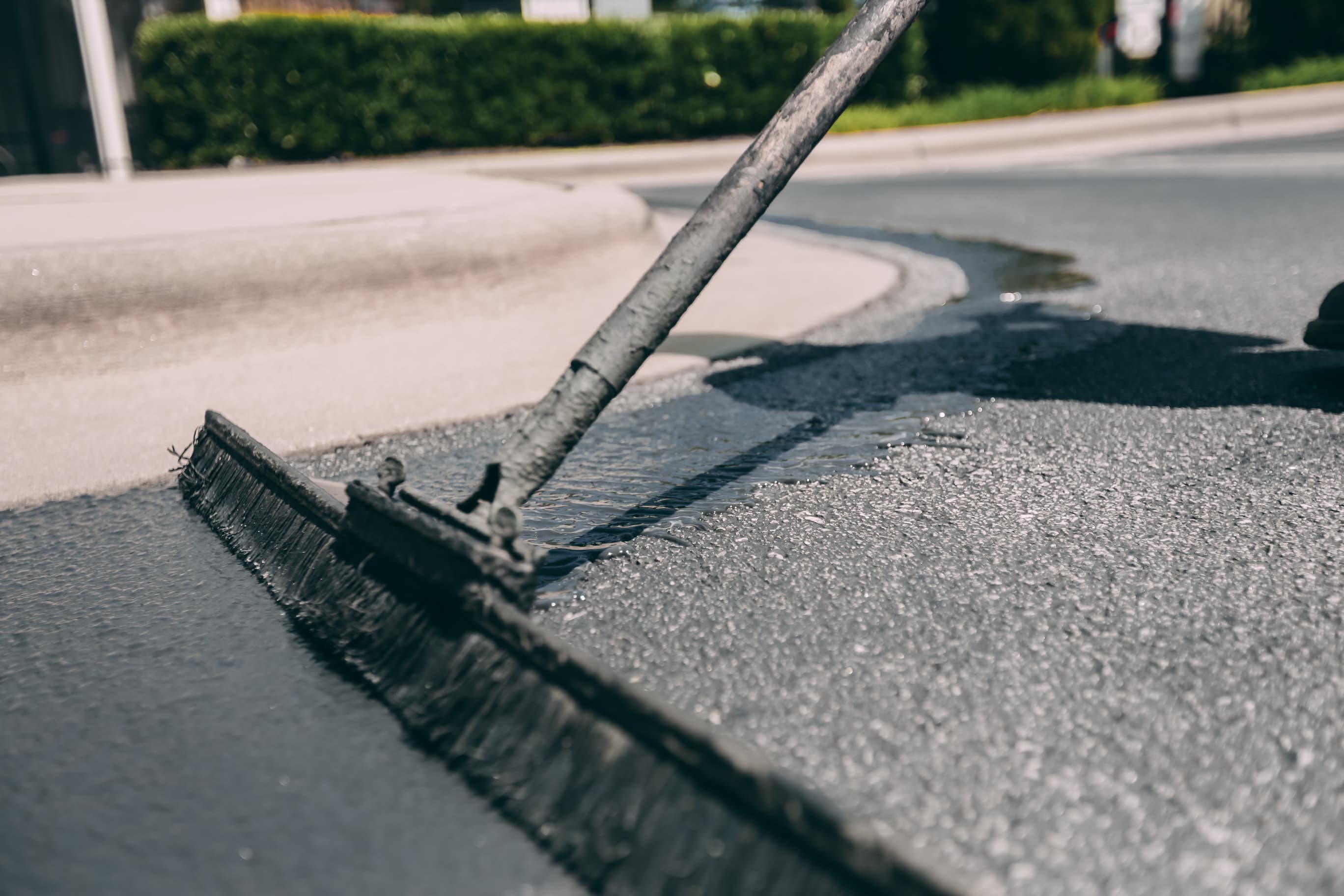Unleash the Possible: Regrading and Asphalt Sealing for Commercial Areas
Unleash the Possible: Regrading and Asphalt Sealing for Commercial Areas
Blog Article
Warm Mix Asphalt: A Lasting Remedy for Sidewalk
Hot Mix Asphalt (HMA) has actually emerged as a leading sustainable option for pavement remedies, providing a myriad of ecological advantages and innovative modern technologies. As the need for green building practices grows, exploring the nuances of HMA's sustainability can provide useful insights into the future of sidewalk services.
Ecological Benefits of Hot Mix Asphalt

In Addition, Hot Mix Asphalt helps to minimize urban warmth island results. Its dark color soaks up sunshine, reducing the quantity of warmth mirrored back right into the atmosphere compared to lighter-colored pavements. This can reduce ambient temperatures in metropolitan locations, decreasing the need for cooling and eventually lowering energy usage.
Additionally, Warm Mix Asphalt adds to improved stormwater management. Its porous nature enables water to reenergize and penetrate the sidewalk groundwater products, lowering runoff and the risk of flooding. These environmental benefits make Hot Mix Asphalt a sustainable choice for paving freeways and roadways.
Power Performance in HMA Manufacturing
Is power performance a crucial consider the manufacturing of Hot Mix Asphalt (HMA)? Definitely. Power plays a significant role in the manufacturing of HMA, influencing both price and ecological sustainability. One crucial facet of power effectiveness in HMA production is the use of warm mix asphalt (WMA) modern technologies (hot mix asphalt). WMA allows for the blending and positioning of asphalt at lower temperatures compared to typical warm mix asphalt, leading to decreased energy intake throughout production. This process not just reduces fuel use yet likewise reduces greenhouse gas emissions, making it an extra ecologically friendly option.
Moreover, advancements in plant innovations have actually led to even more energy-efficient HMA production procedures. By maximizing energy usage in HMA manufacturing, the industry can lower its carbon footprint while preserving premium sidewalk materials.
Recyclability of Hot Mix Asphalt
The recyclability of Warm Mix Asphalt (HMA) is a pivotal element of its sustainability and lasting ecological impact. HMA is among one of the most recycled products in the USA, with over 100 million lots of redeemed asphalt pavement (RAP) being recycled annually in new sidewalk building and construction. Recycling HMA provides several environmental advantages, such as reducing the requirement for virgin products, reducing power usage during production, and lowering the quantity of waste sent out to land fills.
The procedure of reusing HMA entails milling the existing sidewalk, squashing it right into smaller sized items, and blending it with new aggregate and asphalt binder to produce a recycled mix. This recycled mix can usually execute along with or perhaps far better than conventional HMA, while calling for less resources and generating reduced greenhouse gas discharges. By integrating RAP into new pavement tasks, you can look here roadway firms can save natural deposits, minimize expenses, and lessen the environmental footprint of road building and maintenance tasks. On the whole, the recyclability of HMA plays a substantial duty in advertising lasting techniques within the pavement industry.

Long-Term Performance of HMA
Asphalt sidewalks show durability and resilience over a prolonged period, showing the long-lasting performance of Hot Mix Asphalt (HMA) The durability of HMA can be associated to its capability to hold up against hefty website traffic tons, extreme climate condition, and the effects of aging. Studies have actually revealed that properly designed and effectively created HMA sidewalks can last for twenty years or more with regular maintenance. The trick to making the most of the long-term efficiency of HMA hinges on utilizing high-grade products, complying with finest practices in construction, and implementing reliable maintenance techniques. Correct water drainage, routine inspections, and prompt repair services are vital for preserving the architectural stability of HMA pavements with time. Furthermore, advancements in HMA modern technology, such as making use of polymer-modified binders and warm mix asphalt, have actually even more enhanced the longevity and durability of HMA sidewalks. By prioritizing quality building and construction and maintenance techniques, HMA remains to confirm itself as a sustainable and cost-effective option for lasting sidewalk facilities.

HMA: Resilience and Sustainability
Showing both toughness and sustainability, Hot Mix Asphalt (HMA) has actually come to be a foundation in the building and construction of resilient pavement facilities - angled parking. HMA's resilience originates from its ability to hold up against heavy lots, severe climate conditions, and high website traffic volumes, making it a trustworthy choice for roads, highways, and flight terminal paths. The composition of HMA, which normally consists of aggregates, binder, and filler, plays a critical role in improving its long life and resistance to tear and use
In addition, HMA's sustainability depends on its recyclability and energy-efficient production procedure. The capacity to reuse recovered asphalt sidewalk (RAP) in brand-new HMA combinations decreases the need for virgin products and minimizes the environmental effect of anonymous sidewalk building and construction and upkeep. Additionally, the energy effectiveness of producing HMA lies in its lower blending temperature levels contrasted to various other sidewalk products, leading to minimized energy usage and greenhouse gas exhausts.
Verdict
In verdict, warm mix asphalt (HMA) provides a sustainable solution for sidewalk with its eco pleasant features. HMA's recyclability, power effectiveness in production, and long-lasting Get More Info toughness make it a green option for roadway building.
HMA is one of the most recycled materials in the United States, with over 100 million bunches of recovered asphalt sidewalk (RAP) being recycled annually in brand-new pavement building and construction.The process of reusing HMA includes crushing the existing pavement, squashing it into smaller sized pieces, and blending it with new accumulation and asphalt binder to create a recycled mix.Asphalt sidewalks show toughness and resilience over a prolonged period, showing the long-term performance of Warm Mix Asphalt (HMA) Furthermore, advancements in HMA innovation, such as the usage of polymer-modified binders and warm mix asphalt, have actually further improved the durability and durability of HMA sidewalks. The capability to recycle reclaimed asphalt sidewalk (RAP) in brand-new HMA mixes lowers the demand for virgin products and lessens the environmental impact of sidewalk building and maintenance.
Report this page